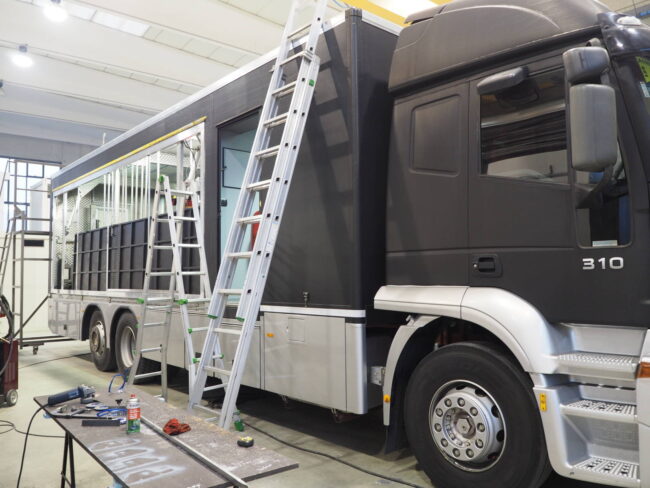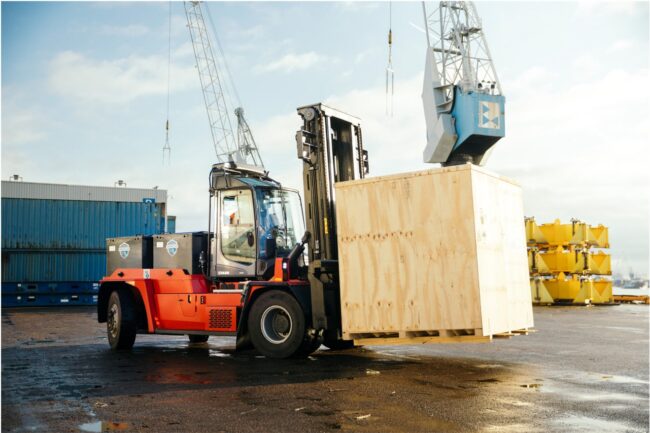In the bustling world of transportation and logistics, the importance of proper truck maintenance cannot be overstated; a well-maintained truck ensures the safety of the driver and cargo while contributing to the overall efficiency of the supply chain.
This comprehensive guide evaluates the intricacies of truck maintenance, focusing specifically on the cleanliness aspect – an often overlooked but critical facet of preserving the vehicle’s longevity and performance.
1. External Maintenance

- 1.1 Washing and waxing: First, prevention is the best form of defence – Truckjunkie customized mudflaps prevent mud, water, salt and debris from spraying out and impacting the body. Second, regular washing and waxing form the cornerstone of external truck maintenance; washing removes accumulated dirt that can corrode the vehicle’s exterior over time. Third, waxing provides a protective layer that shields the paint from environmental elements, preventing oxidation and fading. Investing time and resources in a consistent washing and waxing routine enhances the truck’s aesthetic appeal and safeguards structural integrity.
- 1.2 Undercarriage cleaning: While the visible exterior is paramount, neglecting the undercarriage can lead to long-term issues; susceptible to road debris, salt and moisture (especially in harsh weather conditions), the undercarriage requires periodic cleaning to prevent rust formation and corrosion, preserving the structural integrity of the truck and its components.
- 1.3 Tire maintenance: Paramount for ensuring optimal fuel efficiency and vehicle performance, proper tire maintenance involves regularly checking tire pressure, rotating tires as recommended and aligning the wheels to prevent uneven wear. Maintaining proper tire pressure extends tire life and enhances fuel efficiency, contributing to cost savings over the long run.
- 1.4 Window and mirrors: Essential for a driver’s visibility on the road, clean and clear windows and mirrors play a critical role in promoting safer driving conditions and mitigating the risk of accidents. Consistently and regularly using appropriate cleaning solutions to remove dirt, grime and streaks ensures clear visibility and contributes to overall road safety. This proactive approach to maintenance fosters a secure driving environment and minimizes potential hazards on the road.
- 1.5 Cleaning the air horn. Amidst the external maintenance routines, it is imperative not to overlook the often-neglected component – the air horn. The air horn is typically mounted on the roof or near the front of the truck and serves as a critical safety feature. Clean and properly maintained truck air horns ensure optimal functionality – especially in emergencies.
2. Interior Maintenance

- 2.1 Cabin cleaning: The truck’s cabin serves as the second home for drivers – its cleanliness directly impacts well-being and productivity. Regularly vacuuming and cleaning the cabin surfaces, including the dashboard, seats and floor maintains a hygienic environment and prevents the build-up of allergens. Additionally, a clean cabin enhances the overall driving experience.
- 2.2 HVAC system maintenance: The Heating, Ventilation and Air Conditioning (HVAC) system is vital to guarantee driver comfort. Regularly replace air filters, clean vents and inspect the system for any signs of malfunction. Proper maintenance of the HVAC system provides a comfortable driving environment and contributes to the driver’s health and well-being.
- 2.3 Electronics and controls: Trucks are equipped with myriad electronic components and controls – regularly inspect and clean switches, buttons and other controls to ensure proper functionality. Dust and debris accumulation can lead to malfunctions, affecting the vehicle’s overall performance. Additionally, a proactive approach to electronics maintenance ensures a seamless operation of essential systems, enhancing the truck’s reliability on the road.
3. Engine and Mechanical Components
- 3.1 Regular oil changes: The engine is the heart of any truck – regular oil changes are vital for its smooth operation. Follow the manufacturer’s recommended oil change intervals and use high-quality oil and filters. Clean oil ensures proper lubrication and reduces friction, preventing premature wear and tear on engine components. Consistent adherence to this maintenance practice prolongs the engine’s lifespan and optimizes overall performance.
- 3.2 Fuel system maintenance: Maintaining a clean and efficient fuel system is essential for optimal engine performance – regularly replace fuel filters and use fuel additives as recommended by the manufacturer. Clean fuel injectors and a well-maintained fuel system contribute to better fuel efficiency and reduce the risk of engine problems; meticulous care of the fuel system is integral to ensuring the truck’s longevity and cost-effective operation over time.
- 3.3 Cooling system care: The cooling system is critical for preventing the engine from overheating – regularly check coolant levels, inspect hoses and clean the radiator to ensure efficient heat dissipation. Overheating can lead to severe engine damage, making cooling system maintenance a top priority in safeguarding the vehicle’s longevity and overall reliability.
- 3.4 Brake system inspection: The brake system is integral to the safety of the truck and its occupants – regularly inspect brake pads, rotors and fluid levels. Thoroughly clean brake components and address any signs of wear or malfunction promptly to ensure reliable braking performance. A vigilant approach to brake system inspection contributes significantly to the overall safety and operational efficiency of the truck.
4. Cargo and Storage Areas

- 4.1 Cargo bed maintenance: For trucks involved in transporting goods, maintaining a clean and well-organized cargo bed is essential. Remove any debris, secure cargo properly and clean the bed regularly to prevent damage to the vehicle and the transported goods. A well-maintained cargo bed contributes to the overall safety and efficiency of the transportation process.
- 4.2 Storage compartments: Many trucks come equipped with various storage compartments – it is essential to regularly clean and meticulously organize these spaces to enhance accessibility and prevent the accumulation of debris. Well-maintained storage areas contribute to a more efficient workflow and ensure tools and equipment are readily available when needed, thus optimizing the truck’s operational readiness and facilitating a streamlined working environment.
- 4.3 Interior cab organization: The organization of the interior cab is crucial for the driver’s comfort and efficiency. Implement a systematic approach to arranging personal items, paperwork and equipment within the cab. Regularly declutter and organize to create a comfortable and distraction-free environment, allowing the driver to focus on the road. This attention to cab organization contributes to a smoother and more enjoyable driving experience.
Concluding Remarks
In conclusion, the art of truck maintenance goes beyond routine inspections; it involves a meticulous approach to cleanliness and upkeep. A well-maintained truck reflects professionalism while enhancing safety, reliability and efficiency in transportation operations. By following this comprehensive guide, truck operators can proactively preserve their vehicles, contributing to a smoother and more cost-effective operation in the dynamic world of transportation.




